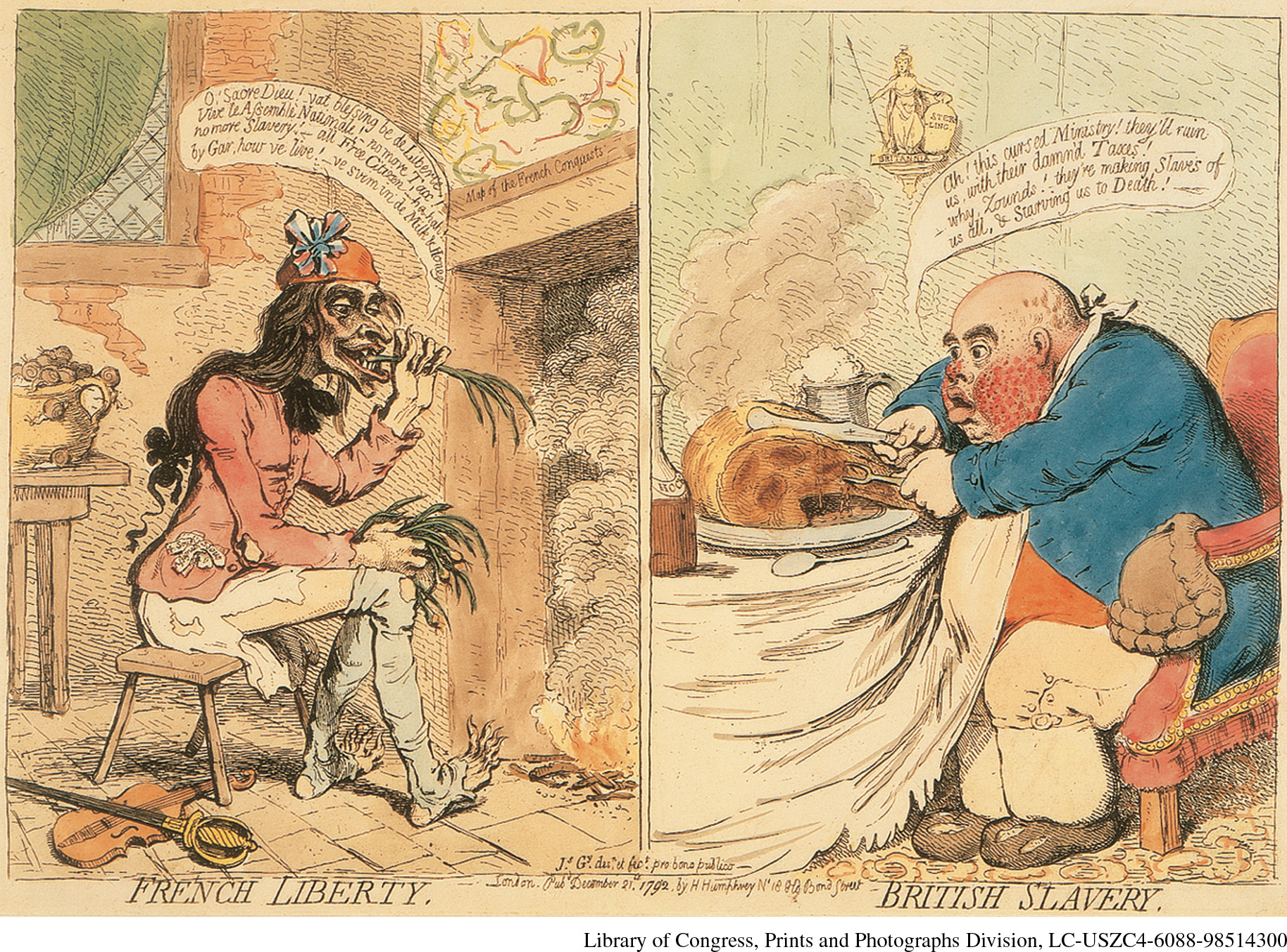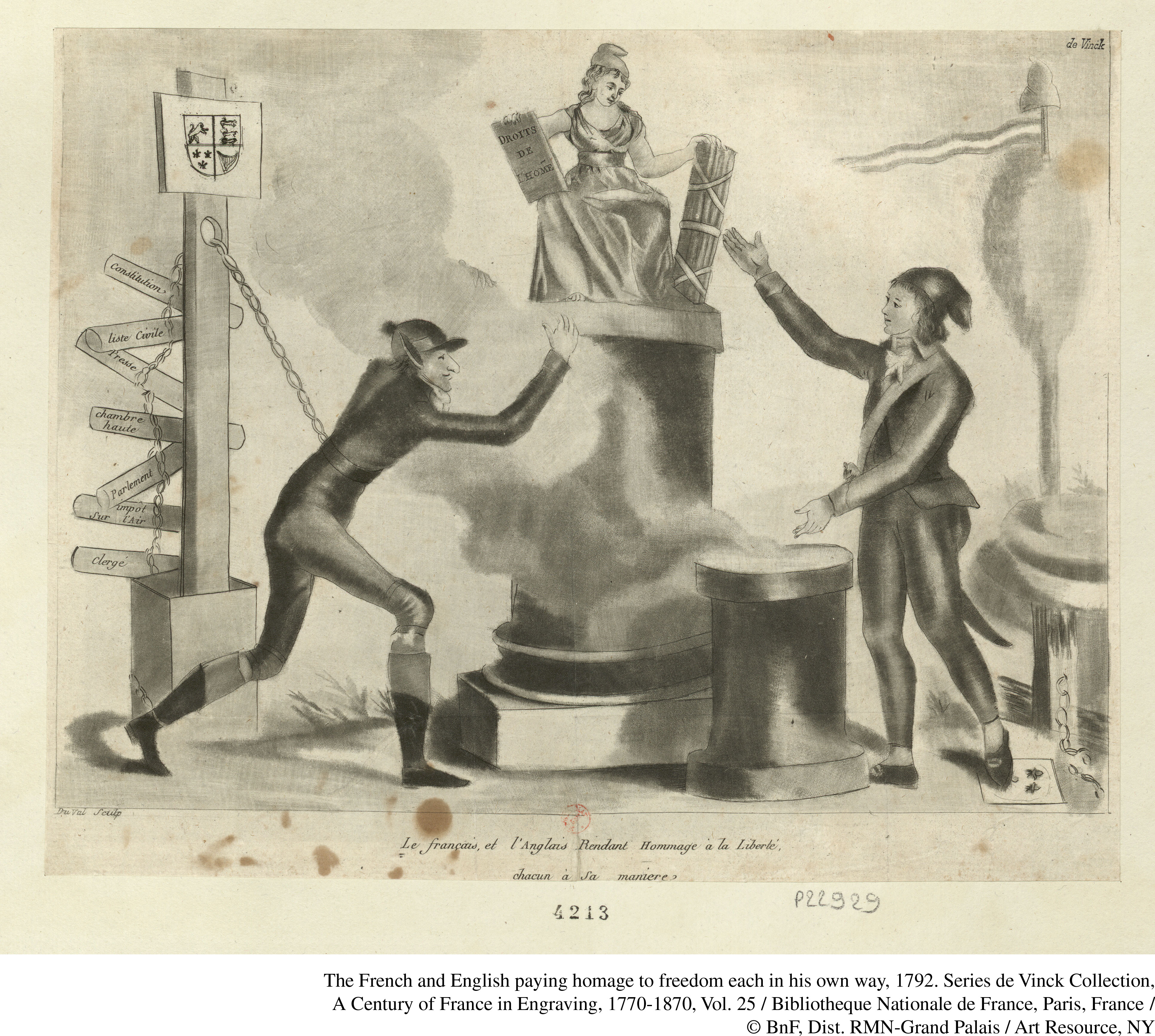Seeing History: The Cutting Edge of Caricature
Printed Page 637
Important Events

Caricatures were the eighteenth-century ancestors of the modern editorial cartoon. Caricatures used comic exaggeration of bodily features to make their point. The French Revolution led to an explosion of all print forms, from newspapers, pamphlets, and books to printed images that were etched or engraved on metal plates and then printed on a press. Print forms proliferated not only in France itself but also in many countries, like Great Britain, that fought against France in the revolutionary wars. Opposition required expression too. Although printed images often included words to make the meaning clearer, they could usually be understood even by those who did not read. When you look at these two images, think about the reaction of someone who could not read the words.
The first image, an etching printed ca. 1792, is titled “The Frenchman and Englishman Paying Homage to Liberty Each in His Own Fashion.” On the left, the very thin Englishman is in chains as are all the supposed benefits of English liberty (from constitution on the top board on the left to clergy on the bottom). On the right is a Frenchman wearing a liberty cap (a fashion that recalled the caps worn by freed slaves in ancient Rome). The female figure of Liberty is wearing the same cap. In her right hand, she holds a tablet of the law and in her left a bound bundle of rods called a fasces, an ancient Roman symbol for unity and authority.
The second image, a colored etching by the English artist James Gillray, also dates to 1792 but is much more comic in its effect. The contrast between French Liberty on the left and British Slavery on the right could not be more dramatic. On the left is a scrawny sans-culotte, presumably male but of uncertain sex (because of the long hair and tight shirt). He sits before an open fire eating raw onions even while saying to himself “ve swim in de Milk & Honey” (in other words, we live a life of luxury). On the right is a grossly obese Englishman dining on the classic English dish roast beef. He is complaining about the government’s taxes that are “Starving us to Death!”
Questions to Consider
- What are the different meanings of slavery conveyed by these images?
- In what ways is Gillray making fun of both the French and British?